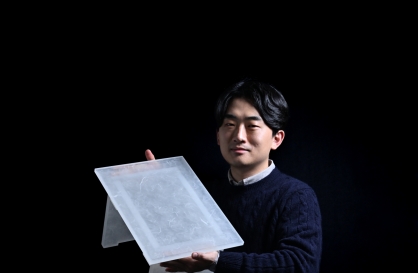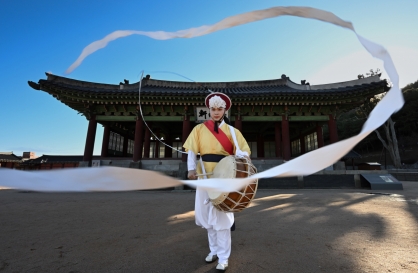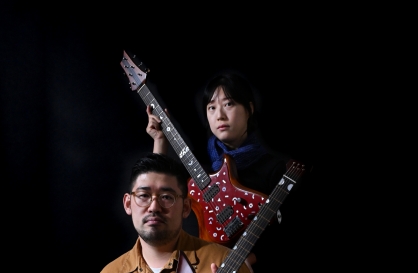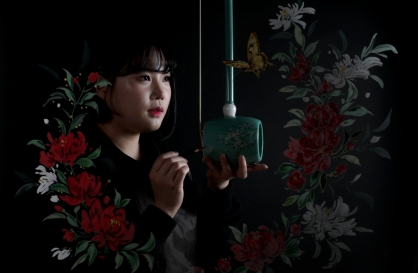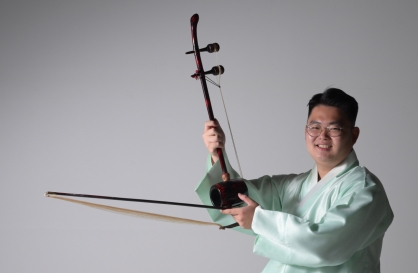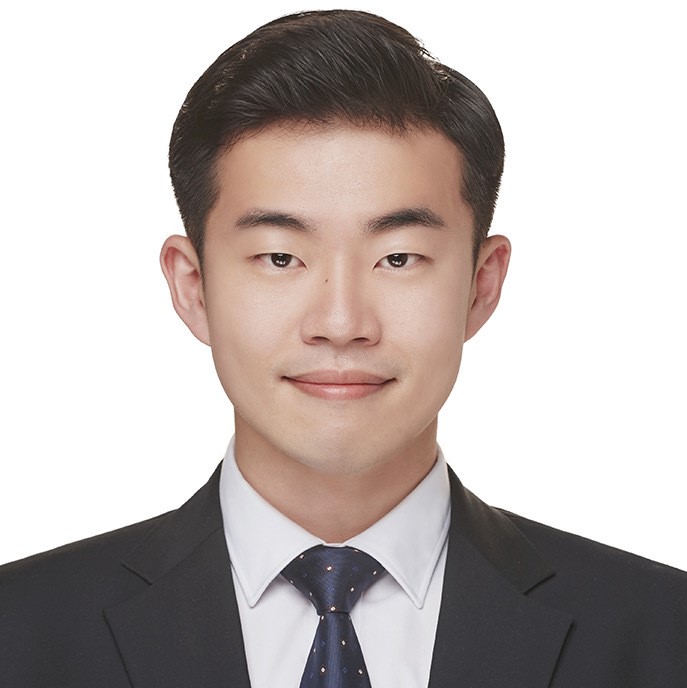Most Popular
Eye Plus
[Eye Plus] Sound of the 'janggu' 'echoed in my heart'
By Lim Jae-seongPublished : July 15, 2023 - 16:01

Performers wearing hats that look like huge flower bouquets walk in single file while beating rapidly on instruments slung over their shoulders. Thunder-like sounds from the leather drum skins reverberate across the auditorium, filling the space with booming rhythms.
Among the instruments, the sounds of the "janggu," a traditional percussion instrument consisting of a two-headed drum covered with leather and carried with a sash, moved Lee Chang-geun to become a performer of "Gochang nongak" during his first encounter with the traditional rural music and performance at a university club recital in his college's auditorium.
“The sound of the janggu echoed in my heart,” the 24-year-old said, reminiscing about his first time attending the performance.

Gochang nongak, designated intangible cultural heritage by North Jeolla Province, is a form of traditional rural music and performance originating from and handed down by farmers in Gochang-gun, North Jeolla Province.
Nongak, which can be translated directly as "farmers’ music," was traditionally performed to wish for the harmony and well-being of villagers especially on important days in which major agricultural work was performed collectively, such as when transplanting rice seedlings or harvesting rice. The music creates an energetic rhythm for working and an enjoyable atmosphere.
It is no longer easy to find nongak being played in the fields in today's Korea, though Lee and his colleagues are trying to keep Gochang nongak alive.
Lee is the leader of his college's Gochang nongak club, and plays the janggu as a member of the Gochang Nongak Cheongchun Gutpae, or official youth troupe, as well.

“I want to let the audience experience wonderful nongak performances, sharing the beauty of this traditional music with prospective nongak performers,” said Lee.
Beyond his attraction to the music itself, the moments of feeling togetherness with the other players in performances have motivated him to travel around Korea to perform nongak.
“I learned a lot about ways to be together with others after I started to play nongak,” Lee said.
“A brilliant performance by one member alone does not necessarily lead to a good nongak performance. By coordinating with each other, everyone must bring their hearts together in the performance,” he added.

In striving to raise public appreciation for nongak, Lee hopes more people will participate in the traditional performance scene, so that he can continue to enjoy precious times playing with other performers.
“Nongak is like a shelter for me when I am tired of everyday life. I feel pure happiness in the performances,” Lee said.
“I hope the happiness, sense of belonging with others and lessons for life in the nongak performances continue for the rest of my life,” he added.
Photo by Im Se-jun
Written by Im Se-jun, Lim Jae-seong








![[Herald Interview] How Gopizza got big in India](http://res.heraldm.com/phpwas/restmb_idxmake.php?idx=644&simg=/content/image/2024/11/20/20241120050057_0.jpg&u=20241120164556)
![[KH Explains] Dissecting Hyundai Motor's lobbying in US](http://res.heraldm.com/phpwas/restmb_idxmake.php?idx=644&simg=/content/image/2024/11/20/20241120050034_0.jpg&u=)

